PROTECTING THE YANGTZE, FROM TIBET TO SHANGHAI
What connects Tibet and China most immediately, most physically, is water, the flow of water from the glaciers and great meandering pastoral rivers of Tibet, which eventually reach lowland China, specifically the Ma Chu or Yellow River and the Dri Chu or Yangtze.
Tibetans, proud to be the fountainhead of most of Asia’s big rivers, have adopted China’s slogan, calling Tibet China’s Number One Water Tower and in fact Asia’s Number One Water Tower.
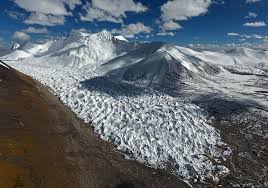
The Yangtze is a mighty river, directly uniting Dritö and Shanghai, Yushu and Jiangsu, upland and coast. While water naturally flows down, in modernity there is an upriver flow of political power, the planner’s gaze, the writ of the state, concrete and steel, imposing their hydro dams, power grids, laws and official zoning policies that make vast areas into resource extraction zones, industrial zones or ecological civilisation zones.
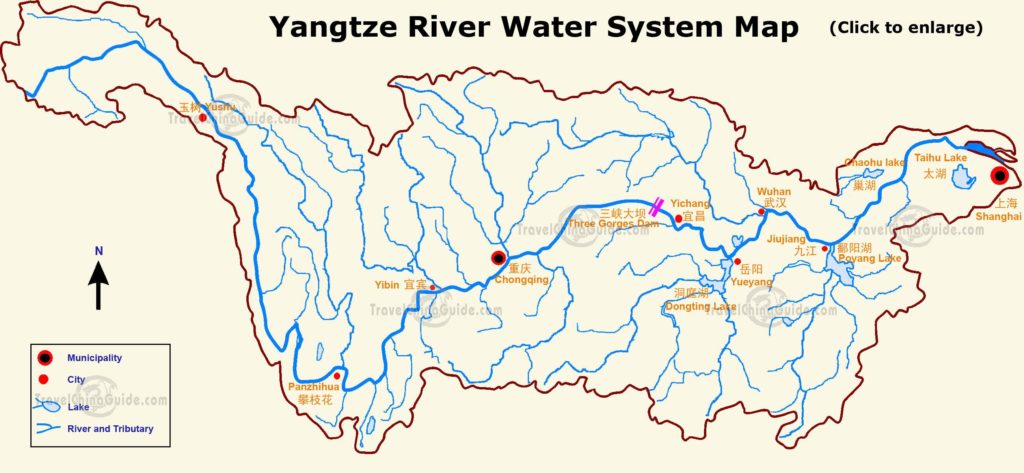
So big is the Dri Chu/Yangtze system, 19 of China’s 31 provinces are directly involved, each with a provincial agenda, usually prioritising development, growth, industry and local vested interests. A recent effort to list everyone who has control found: “According to the existing laws and regulations, these jurisdictions belong to 15 ministries and commissions and 76 functions of the central government. They belong to 19 provincial governments with more than 100 functions.” The Yangtze River basin covers 20% of the geographical territory of China and sustains 400 million people, or 43% of the country’s population. The Yangtze River region makes up more than a third of China’s freshwater reserves, contributing 42% of China’s GDP and 73% of the country’s hydropower.
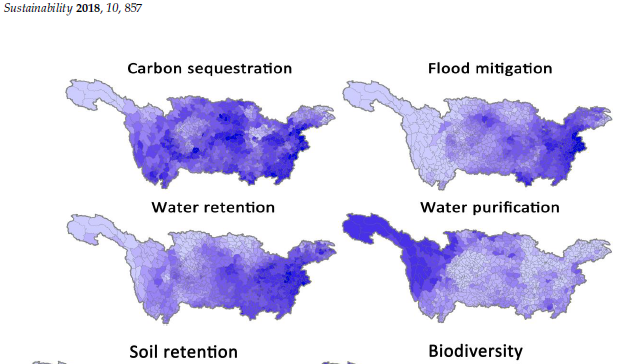
The time has at last come for a unified approach, and a single law at national level to implement that uniform approach. The drive for consistency comes from environmental concern, from acute awareness that the Dri Chu/Yangtze has been over used, polluted, taken for granted, heavily dammed for decades, and those vested provincial interests are entrenched.
There is to be a Yangtze River Protection Law, 长江保护法, by the end of 2019. The announcement was made during the March 2019 session of the National People’s Congress, with preparatory work already under way.
For Tibetans, the big question is whether the Yangtze Protection Law will actually protect the Dri Chu, especially from hydro dam plans on several major Yangtze tributaries, in Kham Kandze and Amdo Ngawa, all in Sichuan province. Is this a law further centralising power, for the benefit of Shanghai and Beijing, or will it benefit everyone right along a river over 6000 kms long?
What is meant by protection? Who will define it? Will the new national law have sufficient status, standing, funding and enforcement staff to actually override provincial engineers and dam builders, as well as industrial polluters downstream? Even more fundamentally, will the Yangtze Protection Law protect the entire Yangtze, or be restricted to the Yangtze River Economic Belt (YREB) of the mid to lower river, bypassing Tibet altogether?
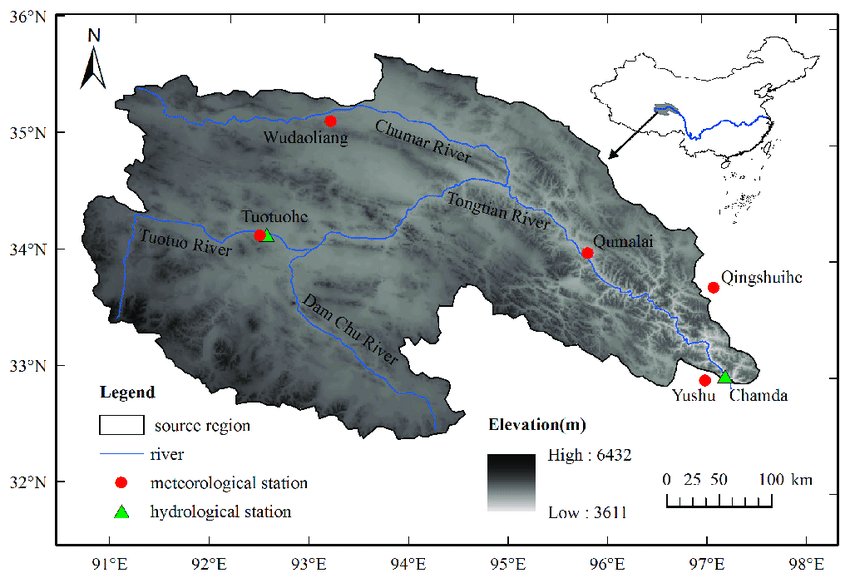
The answers to these key questions are not yet clear. In fact, the tussle over this law and the extent of its powers is just beginning to flare. China may present itself as unitary and at the direction of one man, but this is an issue of much contention, with no certain outcome, and lots of players.
MEET CHINA’S ELITE ENVIRONMENTALISTS
The idea of an overriding Yangtze protection Law has been a long time coming. The push has come from environmentalists in high places, within the official system. There is no guarantee they will win, especially if top leaders fear, above all else, economic slowdown and respond by stimulating economic growth as the top priority.
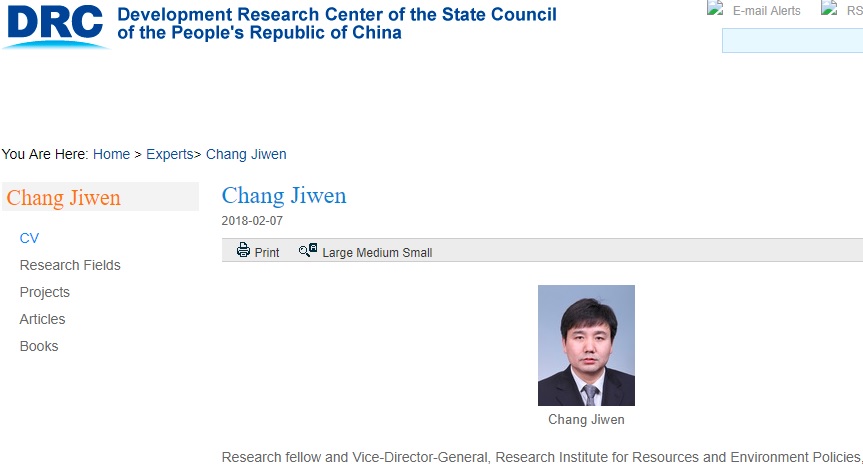
A leading proponent of the Yangtze Protection Law is Chang Jiwen, 常纪文 deputy director of the Institute of Resources and Environmental Policy of the Development Research Centre of the State Council, who had opportunity in September 2018, in People’s Daily to explain precisely what is needed if such a law is to be meaningful. Chang Jiwen is an insider who knows how China works, what needs to be done and how, if all the talk about “constructing environmental civilisation” is to succeed. Even in this new era, when the party is overtly above the law and overtly in command of government at all levels, the State Council, equivalent to a western cabinet, has clout. But is this really a new era, or will the Yangtze yet again be dammed, as it was at Three Gorges, displacing 1.3 million people?
Chang Jiwen regularly exercises his power to push for environmental concerns to have real power, no longer be token afterthoughts. This means pushing for the central state to override local interests, and for authoritarian disciplinary powers to enforce environmental outcomes, overriding local vested interests that pay lip service to national policy but persist in their old ways. His rise is a sign that environmentalism is newly strengthened and emboldened, and intends to get results.
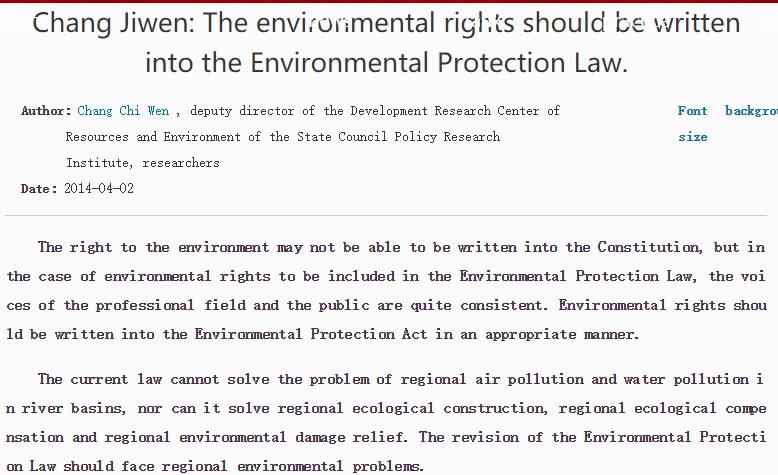
None of that guarantees success. There are countless ways the 19 provinces and 15 ministries can look after their own turf.
As Tibetans have a major stake in all of this, Tibetan voices need to be heard in this debate, as they were in 2004 when the damming of the Gyalmo Ngulchu (Nujiang in Chinese) was halted by an effective coalition of Tibetan and other minority activists working with well-connected Beijing intellectuals and insiders. Tibetans are in a position to make a difference, now that this debate, long low key, is out in the open.
OMITTING TIBET
For Tibetans, a key question is whether the new law covers the whole river, or just the lowlands, from midriver, below Three Gorges, on down. Precedent isn’t good. The Mekong (Za Chu in Tibetan) rises in the same Sanjiangyuan National Park as the Dri Chu/Yangtze and Yellow rivers, that is why the park is branded the Three Rivers Source/Sanjiangyuan. Yet China excludes the Mekong in Tibet from membership of the Mekong Subregion development area, although Yunnan does belong. As a result, maps of the Mekong, its problems and prospects, routinely omit the upper Mekong, as if it doesn’t exist; shifting the focus to Yunnan, Lao, Myanmar, Cambodia and Vietnam.

The recent inflation of the Greater Mekong Subregion (GMS), to include a Chinese province nowhere near the Mekong, while still excluding Tibet, is a reminder the fate of the Yangtze, especially in Tibet, is far from certain. Since GMS is primarily an initiative of the Asian Development Bank, the countries and select Chinese provinces comprising GMS stand to gain a lot of investment capital, mainly to overcome geography and build infrastructure of highways, railways, hydro dams and power grids.
The upper Yangtze similarly is scheduled for huge capital expenditure by China, on hydro dams, power grids and even large scale diversion of Yangtze waters, via canals and tunnels, to the parched Yellow River to the north, the designated route being in Kham Kandze. Now that the easier dams, below the Tibetan Plateau, are largely built, many argue it is now time for the big dam builders to move upstream and turn the engineering drawings into concrete reality.
So the key questions are:
- Is the upper Yangtze, in Sichuan and Qinghai provinces, to be covered by the Yangtze Protection Law?
- Will Sichuan province continue to argue for more hydro dams and power grids on upper Yangtze tributary valleys, as being in the national interest, providing not only Sichuan but China with renewable energy, via ultra-high voltage power grid?
- Will Qinghai persist with arguing that Yangtze protection in the source area is best guaranteed by the creation of the Sanjiangyuan National park, due to be proclaimed in 2020, removing almost all drogpa nomads, in the name of restoring the “original ecology” of landscapes sustainable grazed by Tibetans for thousands of years?
- Will the national government crack down on polluters on the mid and lower Yangtze, yet side with the arguments of Sichuan and Qinghai provinces, that it is in the national interest to both build the tallest hydro dams in the world, and to exclude the Tibetan nomads from the uppermost Yangtze?
- In short, how will the national interest be defined? It could go either way. This is not the first attempt at a national solution to the governance of the entire Yangtze.
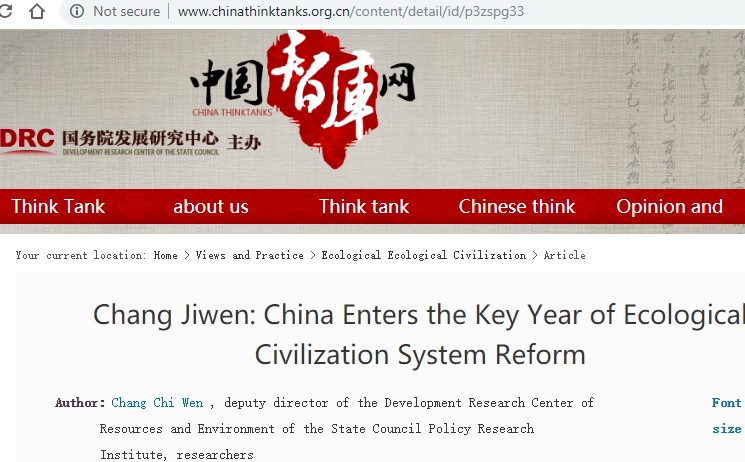
At this point, nothing is certain. The State Council, with a hard-headed realist such as Chang Jiwen driving the legislative process, could recognise the contradiction between dam building and nomad clearances in the name of restoring a pristine “original” landscape. State Council could insist, as it will downstream, that national interests come first, negating the parochial interests of industrial polluters, wasteful irrigators, the cruise ship industry and other local champions. National interest could be defined as limiting the dam construction boom in seismically active, earthquake prone Kham, as too expensive and too unpopular with displaced Tibetan communities. State Council could define national interest in Qinghai as redline zoning and national park protection of the source of the Yangtze, while including the Tibetan drogpa nomads as the skilled stewards of sacred landscapes, rewarded and respected for their thousands of years of sustainable management of curated grasslands.
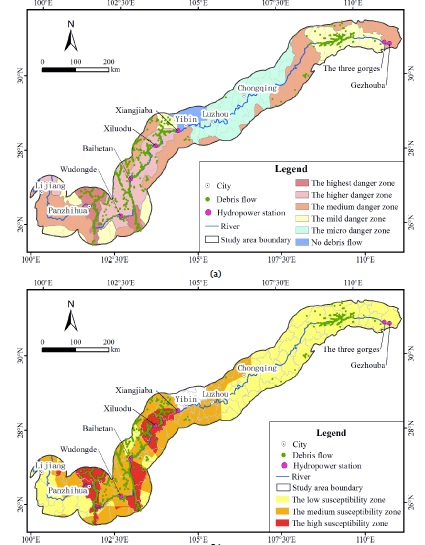
Alternatively, local vested interests may prove too strong, even for a highly centralised China under Xi Jinping. The current fragmentation of authority, among 15 ministries and 19 provincial governments, suggests central leaders will struggle to assert a consistent agenda for the entire river. Beijing will get its way on many aspects of Yangtze governance, but not everywhere. Both Sichuan and Qinghai provincial governments know how to pitch their plans as national in benefit.
Momentum has been building for a long time for conservation of the Yangtze, as a single watershed, beginning to end. Now is the time for the conservation argument to become law. This is why it matters that Tibetans speak, and not be spoken for. The moment has at last come, for the Yangtze in its entirety, from its Tibetan source to its meeting with the Pacific Ocean near Shanghai.
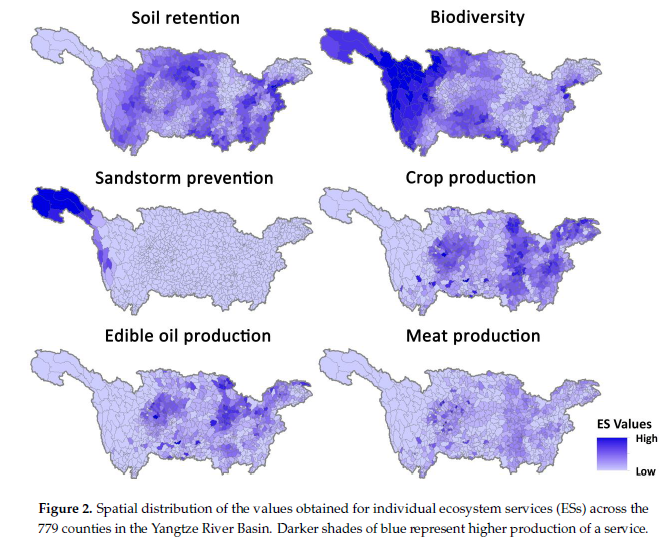
All the defenders of vested interests are assembling, to defend their patch of the Yangtze. They have plenty of experience of pitching their sectional interests as national interest, nowhere more so than in Qinghai, which is heavily dependent on Beijing subsidies to balance its budget and bring in sufficient funding to finance the provincial budget. It was the Qinghai government that popularised the idea that Tibet is “China’s Number One Water Tower” and “Third Pole.” Sichuan too is adept at pitching the power grids taking electricity generated from Tibetan rivers right across China to coastal industries, as the way to make Tibet, at last, pay its way and serve the nation.
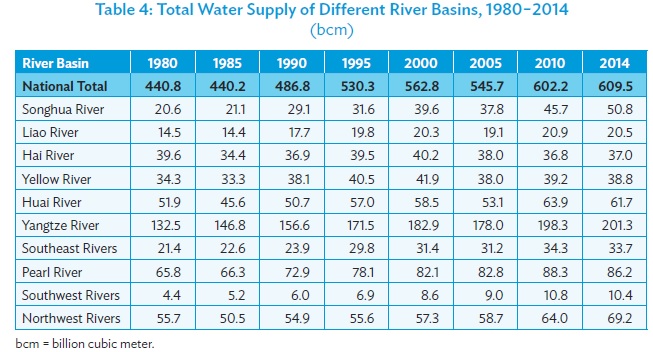
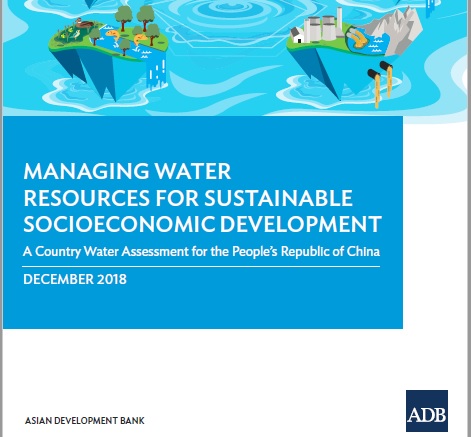
Navigating a path to a future that has room for Tibetans to do what they do best, caring for rivers and landscapes, will be tricky; all the more so as the State Council and its Premier Li Keqiang are clearly subservient to the Party and Xi Jinping. The Party is in command, more than ever.
Chang Jiwen knows how to roll with such changes, how and when to speak plainly about what must be done, and when to be patient, as this is definitely a long-haul issue. He keeps a close watch on how American citizens have legal rights to launch lawsuits against polluters.[1] He has worked with the International Federation for Animal Welfare and the Royal Society for the Prevention of Cruelty to Animals, as he gathered models for China’s first law against animal cruelty, tackling directly the eating of dogs and cats. He wrote that law.
Chang is adept at moving with the times, proposing effective yet inclusive solutions to long-standing problems, with the capitalist economy playing a role. He does not put economy and ecology in two, mutually exclusive camps, avoiding zero sum logic. He publishes prolifically, about a wide range of environmental law prospects, with 40 articles in the two years of 2016 and 2017, in key journals such as Development Research 发展研究 , Green Leaf 绿叶, Chinese Journal of Environmental Management 中国环境管理, and Chinese Ecological Civilisation 中国生态文明. If there is a legislative voice in China on environmental issues, it is Chang Jiwen.
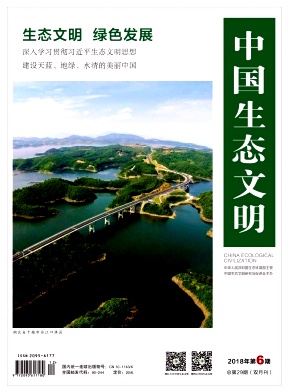
ECONOMIC GROWTH, OR RIVER PROTECTION, OR BOTH?
In Xi Jinping’s new era, all that is good, all progress must be attributed to Xi’s leadership. The key question is whether there is one set of policies for the mid and lower Yangtze, and a quite different approach for the upper Yangtze, above the Three Gorges Dam, which has raised the Yangtze as far upriver as Chongqing. Already, that distinction between upper and lower is entrenched. The lower Yangtze has its own packaging, as the Yangtze River Economic Belt (YREB), attracting a lot of attention, both from China and from international development agencies such as the Asian Development Bank. Although YREB is specifically called an Economic Belt, it is meant to juggle economic growth and environment, limit pollution, mitigate flood danger and hopefully save rare iconic species endemic to the Yangtze. That’s quite a juggle, and it is ongoing.
It would not, unfortunately, be a surprise if all the focus of the forthcoming Yangtze River Protection Law was limited to YREB, as there are plenty of powerful local interests to wrestle into compliance with the national interest in constructing an ecological civilisation. Chang Jiwen published an article on the Yangtze in 2017, in which he focussed almost entirely on the downriver YREB.[2]
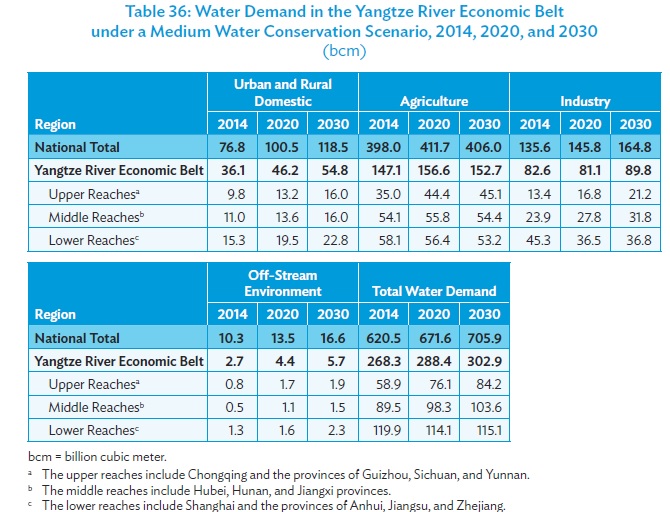
DRI CHU TO SERVE THE LOWER YANGTZE?
If that split persists, it will become one law for the densely populated downriver, another for the upriver, with the upper reaches neglected and, by default, left in the hands of the dam builders, canal and tunnel builders, and power grid builders in Sichuan; and the exclusionary national park planners in Qinghai, despite the blatant contradiction between creating a depopulated pristine virgin grassland wilderness in Qinghai and a highly industrialised energy extraction river in Sichuan, not only on the mainstream (Jinsha in Chinese) but on the major tributaries too.
A further contradiction, inherent in China’s emphasis on “constructing ecological civilisation” is that nature is to be left to repair itself, without construction, only through subtraction of the human presence. No investment in ecosystem rehabilitation is required. Virgin wilderness will restore itself. In reality, Tibetan pastoralists created a productive rangeland, with maximum biodiversity, by selectively clearing unpalatable shrubs and trees, over thousands of years, and by grazing regimes that favoured the growth of medicinal herbs that lose out if grazing stops and the ungrazed grasses grow so tall they block the sun, and the medicinal herbs die.
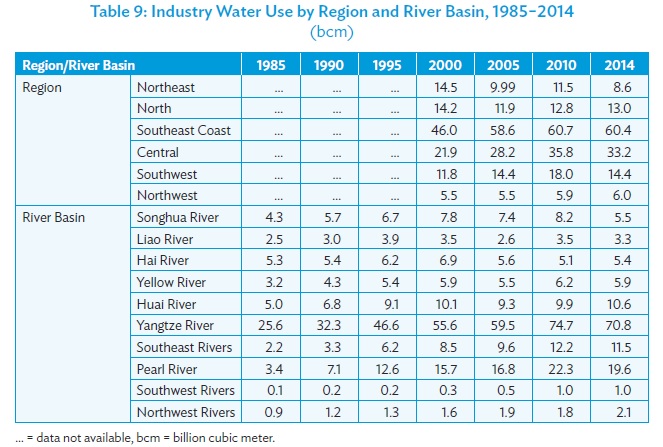
CHINA AS EXEMPLARY CIVILISATIONAL STATE
China is so determined to prove to the world what a great civilisation it is, with a uniquely Chinese approach to absolutely everything, yet is so uninterested in investing in actual rehabilitation work in degraded pastoral lands. Today’s wealthy China could easily afford to employ people to do the work of sowing native grasses, protecting seedlings, and other labour intensive work needed to promote land degradation neutrality. So why not make that investment? Why rely solely on “ecological restoration” as a hands-off inevitability?
To invest in active repair would mean employing Tibetans, and it would expose the actual cause of the patches of degradation, which are found where official allocations of grazing land, compulsorily fenced, were too small for Tibetan drogpa nomads to make a living. Herd sizes necessary for subsistence production required more land, more seasonal mobility, more rotational grazing over extensive pasture lands, none of which China was willing to permit. The result was degradation. In China, not only is the Party always right, it has always been right, about everything. Past policy failures cannot be admitted. To speak of past policy failure is labelled “historical nihilism”, a serious, punishable deviation.
Rather than employing Tibetans to stay on their pastures, and raise them out of poverty by paying them to do the hard physical work of rehabilitating degraded areas, it is far easier to depopulate the pastoral landscape, and declare the emptied lands to be pristine wilderness.
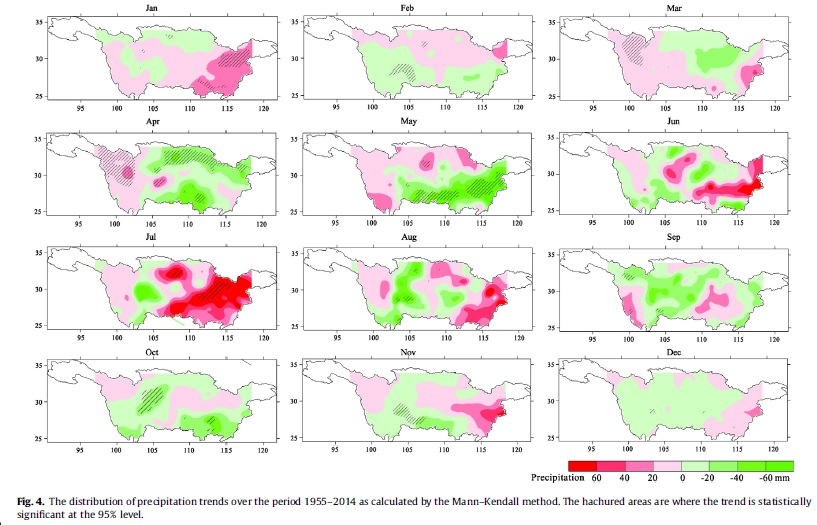
WHO WILL BE PROTECTED?
For all the talk of ecology, whole landscape approaches, and integrated watershed management, the signs suggest the upper Yangtze will not be protected by the Yangtze River Protection Law. In Chang Jiwen’s frequent writings, and in official discourse generally, the focus is on what most immediately concerns urban Chinese in lowland cities: water quality, pollution, dumping of wastes into rivers, potability of city water supplies, and urban air quality.
Given these Sino centric priorities, the upper Yangtze in Tibet is classified as a large area of restoration of nature, all part of the construction of ecological civilisation. That defines the Dri Chu/Yangtze in Kham Yushu and Amdo Golok, all in Qinghai. The Dri Chu, meandering through the alpine meadows, fits into the grand plans of ecological civilisation construction by being zoned ecological, bundled into a national park with an orientalist eastward gaze, as the Sanjiangyuan, and the local communities excluded by the red lines of the laws Chang Jiwen has helped draft are to be benevolently given “ecological compensation” by the central state.
This all changes when the Dri Chu and its many tributaries cross from Qinghai into Sichuan, from rolling pasture to steep mountain valleys. As the Dri Chu accelerates, its hydropower potential is to be harnessed, with the ultra-high voltage power grids China pioneered stretching from the foot of the Tibetan Plateau all the way to China’s east coast, to the endless factories making all that is made in China. Again, Chang Jiwen sees no contradiction, indeed he frequently asserts that the way to build ecological civilisation is “with industrial ecologicalization and ecological industrialization as the mainstay.” This is so vague, it could mean anything.
Thus it is entirely possible that Tibetans will be displaced and excluded, in the name of restoring nature in Qinghai, and for the sake of ecological industrialisation in Sichuan, as the hydrodammers move upriver.
The Yangtze is not only one of the world’s biggest rivers, it is also one of the longest, so long that in China it is known by many names, as the Tongtian in its uppermost reaches, as the Jinsha as it plunges through the mountain valleys it has carved, all in Tibet. Only in the lowlands is it known by its commonest name, the Chang Jiang, or long river. Chang Jiwen plans a legislative regime for the Chang Jiang that, as usual, proclaims China the exemplary ecological civilisation. Yet again, the glaring contradictions, of excluding Tibetans from their own homeland along the river, in the name of nature restoration and ecological industrialisation, all to serve the lower Yangtze’s concentrated urban populations, go unnoticed.

China’s campaign is to be admired, as the complete civilisation, with answers for all problems, a model for developing countries worldwide, a civilizational state better able to tackle the issues of our times than the wobbly democracies.
Chang Jiwen wants a system design that is scientific and reasonable, and with strong enforcement. “Strict system implementation makes the system a rigid constraint and an untouchable high-voltage line” Chang Jiwen says.
THE YANGTZE HIGHWAY FOR PLUNDERING TIBET
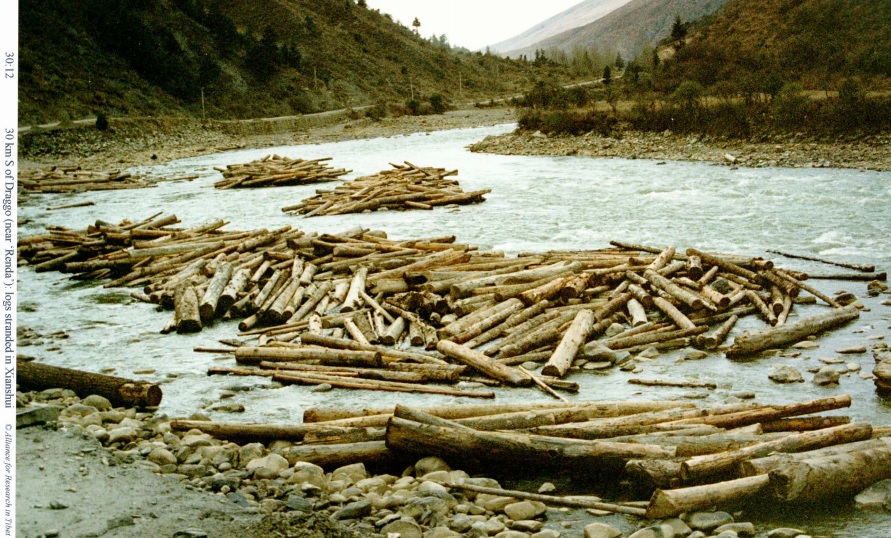
It is now 20 years since China stopped using the Yangtze as a cost-free highway for transporting logs from Tibetan forests to the lowlands. Decades of intensive logging of Tibetan forests, on the steep slopes of precipitous Kham, often did not bother to construct logging access roads to haul fallen trees onto trucks to get them to the timber mills and China’s urban markets. Rather than cutting motorable roads, it was far cheaper to roll and slide the logs down into a Yangtze tributary, to float down to the Sichuan basin, to there be intercepted for milling. These are the forests China now proudly proclaims as “biodiversity hotspots”, in need of such high-level protection that local communities are defined as threats. It was only the heavy flooding along the lower Yangtze in 1998 that forced central leaders to step in and announce a halt to logging, for the sake of the lowlands.
These days, China has moved on, and now intensively logs the forests of Myanmar, SE Asia, Pacific islands and even the Congo.
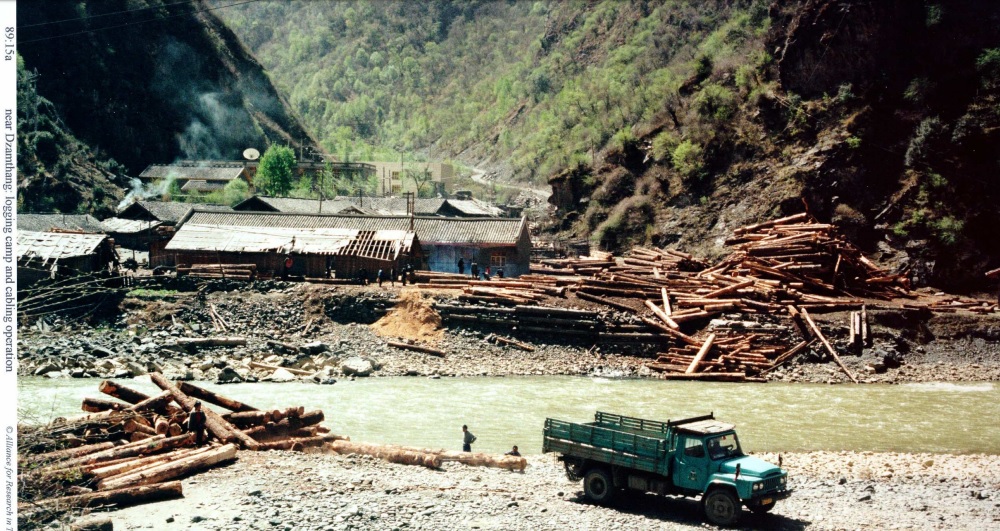
China’s long river has a long history of treating Tibet as exceptional, beyond the frontier, a waste land to be opened up for the benefit of water short, timber short lowlanders seeking their fortunes in the cities. A new Yangtze River protection Law could redress this imbalance, and apply the same standards that apply to the lowlands.
Do China’s laws effectively apply throughout China? Or does “security” relegate all other laws, to the point they have no use in Tibet? Put another way, is China, as it claims, a unitary state based on a great civilisation, or is Tibet still beyond the frontier, unassimilated, to be treated punitively as a rebellious, untrustworthy colony?
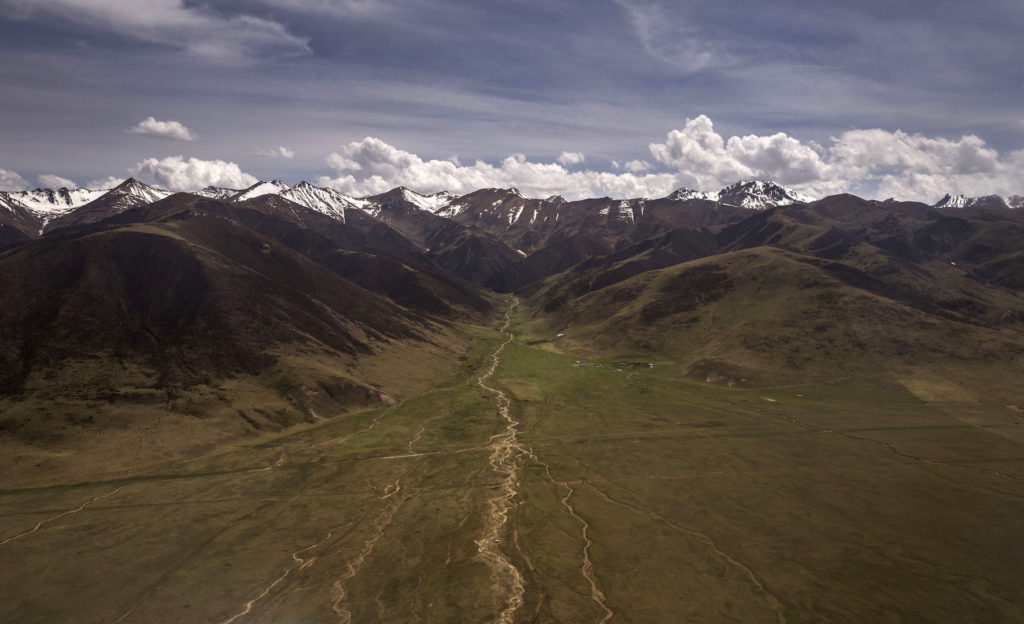
LEGISLATING YANGTZE PROTECTION
Now the legislative process has begun, and all stakeholders are involved. China says what is needed along the Yangtze is a new consistency, because: “existing special laws are not well connected and coordinated with each other; the institutional mechanism is not smooth, and some people have no authority, no one is willing to manage, and the inter-departmental regulatory standards and standards are inconsistent.” Officially, the Yangtze River Protection Law formulation process necessitates that: “We must emancipate our minds, seek truth from facts, and establish the principles of protection priority, green development, development in protection, and protection in development.”
These official slogans can be made to mean anything. What do Tibetans want them to mean? The law is to include a Yangtze River Basin Ecological Environment Court. Will Tibetans have standing, entitling them to press their case, or does “protection in development” mean hydro dams no one may legally object to?
MEET LU ZHONGMEI AND THE YANGTZE ENVIRONMENTAL COURT
The key question raised by a law purporting to protect the Yangtze is: protection for whom, from what? Given that the proponents of this law want both economic development and environmental protection, which of these goals is to predominate, over which section of the river?

A key proponent is Lu Zhongmei , who in March 2019 “submitted a complete draft of the ‘Yangtze River Protection Law’ expert proposal to the National People’s Congress Environmental Protection Committee, and proposed to establish ‘ecological restoration priority, ensure water security, equitably allocate water resources in the basin, and promote sustainable development of the basin.’”
This is an instructive list, and its order suggests the priorities for each section of the long river. Ecological restoration is to be the keyword for the uppermost Dri Chu/Yangtze in Qinghai, as well as delivering “water security”. On the lower Yangtze the key question is allocation of water extraction, and sustainable development. That is the division of labour the Dri Chu is saddled with. Lu Zhongmei is described as “chief expert of the National Major Projects Group of the Yangtze River Protection Law.” She has been a deputy elected to the National People’s Congress since 2003. Hers is the legislative voice, literally. She is president of the Hubei University of Economics, on the Yangtze in Wuhan. As a professor of environmental law, she has championed the right of Chinese citizens (with decent social credit scores) to launch legal proceedings against polluters. This is a right never extended to upriver Tibetans, who are criminalised, as a major threat, as soon as they raise their voices. Tibetans can’t even get jobs assembling iPhones, still less sufficient standing to be accepted by courts as plaintiffs.
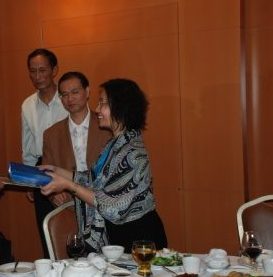
Yet the core idea of this Yangtze River Protection Law is that it covers the entire watershed, which means the national interest overcomes provincial interests. In theory at least the securitisation of Tibet, effectively silencing dissenting Tibetans, can be overcome, as Tibetans have on paper as much right to launch law cases in court as any citizen of China. The animating principle of the drive to build ecological civilisation is that a truly civilised approach embraces an entire watershed, as a single unit, to be governed consistently. That is the aim, and to that end, Lu Zhongmei, a world traveller, has visited other watersheds globally that similarly strive for consistency, including the Rhine and the US/Canada Great Lakes/St. Lawrence River.
What she found was that in the West it is just as difficult to reach agreement on legislation for a whole river, especially if it crosses national boundaries, so “there is no certain model for river basin legislation. The Yangtze River legislation should be based on the Yangtze River Basin characteristics, according to China’s national conditions.” Since new era China demands everything display Chinese characteristics, this assessment is in tune with the times.
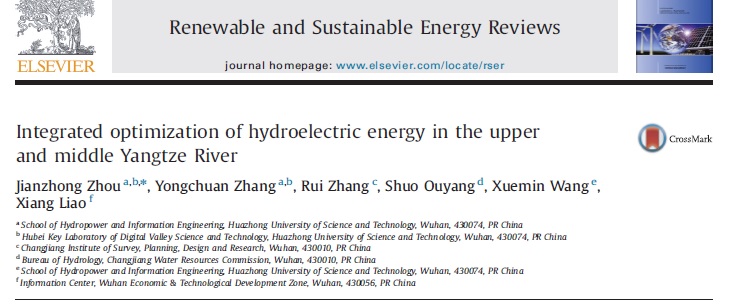
MAKING A RIVER WITH CHINESE CHARACTERISTICS
But what do “Chinese characteristics” mean for this long river of over 6000 kilometres? As always, the needs and biases of the lowland Han supermajority are the yardstick of Chinese characteristics. As usual, what lowland Han China needs is plentiful clean water, and plentiful electricity from renewable sources, all delivered as cheaply as possible. Tibet fits perfectly into this agenda as supplier of raw materials, of basic inputs into the lowland urban industrial economy. This is so normal in today’s China, no one even questions it, or sees a contradiction between dam building and ecological restoration.
This is true even of key influencers such as Chang Jiwen and Lu Zhongmei, who, in today’s China, are on the progressive side, arguing strongly for citizens to have a say in environmental decisions, and for the party-state to strongly enforce pollution standards. Even they seem to not notice Tibet’s twin fates, as pristine wilderness and as dammed cascade, are mutually contradictory.
The same contradiction occurs on the upper Ma Chu/Yellow River, all within a single province, Qinghai. The uppermost Ma Chu is shortly to be incorporated into the Sanjiangyuan National Park, for the high modernist project of delivering water downstream and protecting wildlife. That’s in southern Qinghai. However, northern Qinghai, immediate;y down river, is official zoned for economic production, extracting water and hydropower from the Ma Chu/Yellow River, and releasing wastes into it. No-one seems to see the contradiction.
In almost all river basins, the upper riparians have the upper hand, which is why India, downriver on the Yarlung Tsangpo/Brahmaputra is so nervous about what China is doing upriver, building a cascade series of hydro dams at Lhoka Gyasa. Similarly, downstream Pakistan worries about what India does on the Indus, up river. Only in Tibet, the uppermost fountainhead of all these rivers -the Indus, Yarlung Tsangpo, Yangtze and Yellow- is the upper riparian helpless.
For sixty years, Tibetan voices have been silenced, and it shows. The absence of Tibetans from the public sphere has been a constant, decade after decade, as the security state ran Tibet as an existential threat to the unity of China, decreeing “stability” as more important than anything else.
However, Tibetans and other minority ethnicities have managed in the past to build alliances with well-connected opinion leaders in Beijing, as in the 2004 campaign that halted damming on the Gyalmo Ngulchu/Nu River in Yunnan.
The legislation drafting process is now under way, including consultations, in the many provinces the Yangtze flows through, with “local legislators, entrepreneurs, experts and law enforcement officers.” The national legislators say they have “extensively listened to opinions and suggestions.” Cheng Lifeng of the NPC Legislative Group for Legislation of the Yangtze River Protection Law “said that last year, he went to Chongqing, Hubei, Shanghai, Jiangsu, Guangdong, Qinghai and other places to conduct field research, and held regional seminars in 19 provinces including the upper, middle and lower reaches, and listened to 19 local people’s congresses and governments in the Yangtze River Basin.”
Where are the Tibetan voices? Who speaks for Tibet?
[1] Jiwen Chang, Issues of Chinese Legislation on Public Environmental Lawsuits and the Way Out – Latest Development of American Case Law and its Practice for Reference, 3 Frontiers of Law in China 455 (2008)
[2] Chang Jiwen 常纪文How to achieve breakthroughs in the ecological environment protection of the Yangtze River Economic Belt? China Ecological Civilization, 2017, (04): 51-52